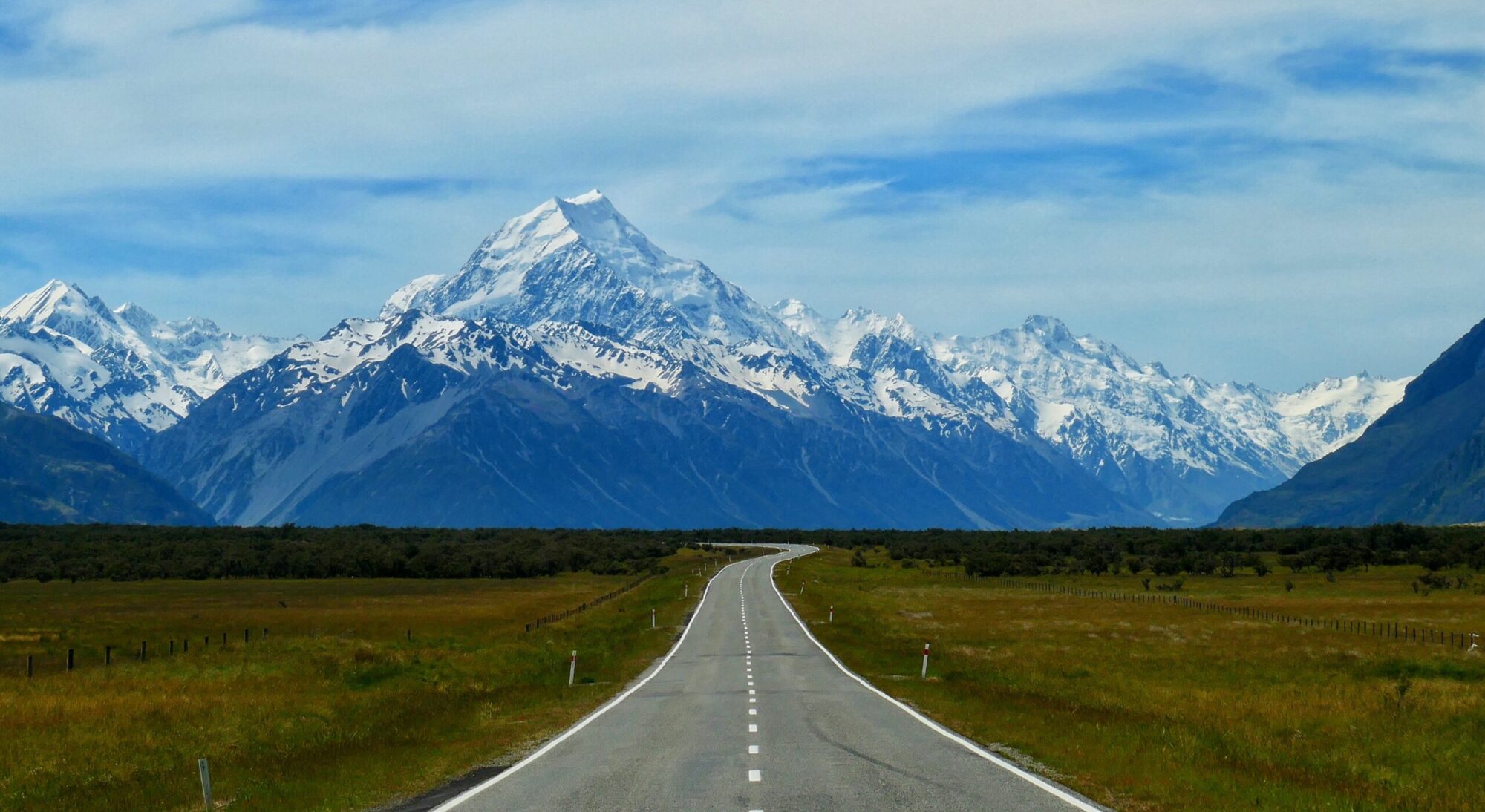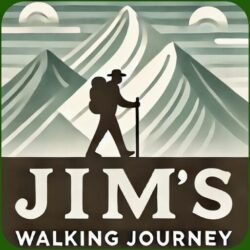Day Seven (Part 1) – Summit Day – Barafu Camp (15,295ft) to Uhuru Peak 19,341ft
It’s two minutes past midnight and we are ‘pulling the trigger’ on our summit bid as Joshua put it in his briefing. Another phrase that struck me in his pre-summit briefing was “give me the next six hours of your life and I’ll get you to the Roof of Africa”. I’ve dreamed of climbing Kilimanjaro for years, I’ve planned and prepared for this trip for nearly seven months, I’ve walked for six days to get to this point and now, all that remains is six hours, six hours to fulfill a dream.
Ironically, I probably had the best four hours sleep of the whole trip before I was woken up at 11pm. What to say, woken up in the middle of the night, freezing cold, pitch black, disorientated and getting ready to climb 4,000ft! We all wandered, zombie like into the mess tent for ‘breakfast’ although I could only manage a couple of spoonfuls of porridge and some tea. Slowly I started to wake up and it was back to the tent to finalise my kit. As mentioned, Barafu Camp is essentially a gravel pit in a fridge at 15,000ft and the dirt and dust gets everywhere and is in everything. What drives people to climb Kilimanjaro and do other challenging things I suppose boils down to how much you really want or desire something. Certainly, if you had no real desire to climb Kilimanjaro you would not be here because it is not really ‘fun’ in its truest sense, it is hard work and requires commitment and determination, but the relative hardship of the circumstances are rewarded tenfold by the immense satisfaction of achieving a goal in life. And that satisfaction and those memories will last the rest of your life. The whole camp was buzzing with activity, with practically every other group heading up the mountain at the same time. The advantage of climbing Kili at night is that, if you are fast you get to the top for sunrise and, although its freezing, that’s better than slogging it up in the heat of the day. The UV in the sunlight and clean air at this height is also pretty fierce, as I will discover to my cost. Also, if you go up in the day you will probably be coming down by torchlight at night and with tired legs, not a good combination.
*Click on any image to open larger in new window*
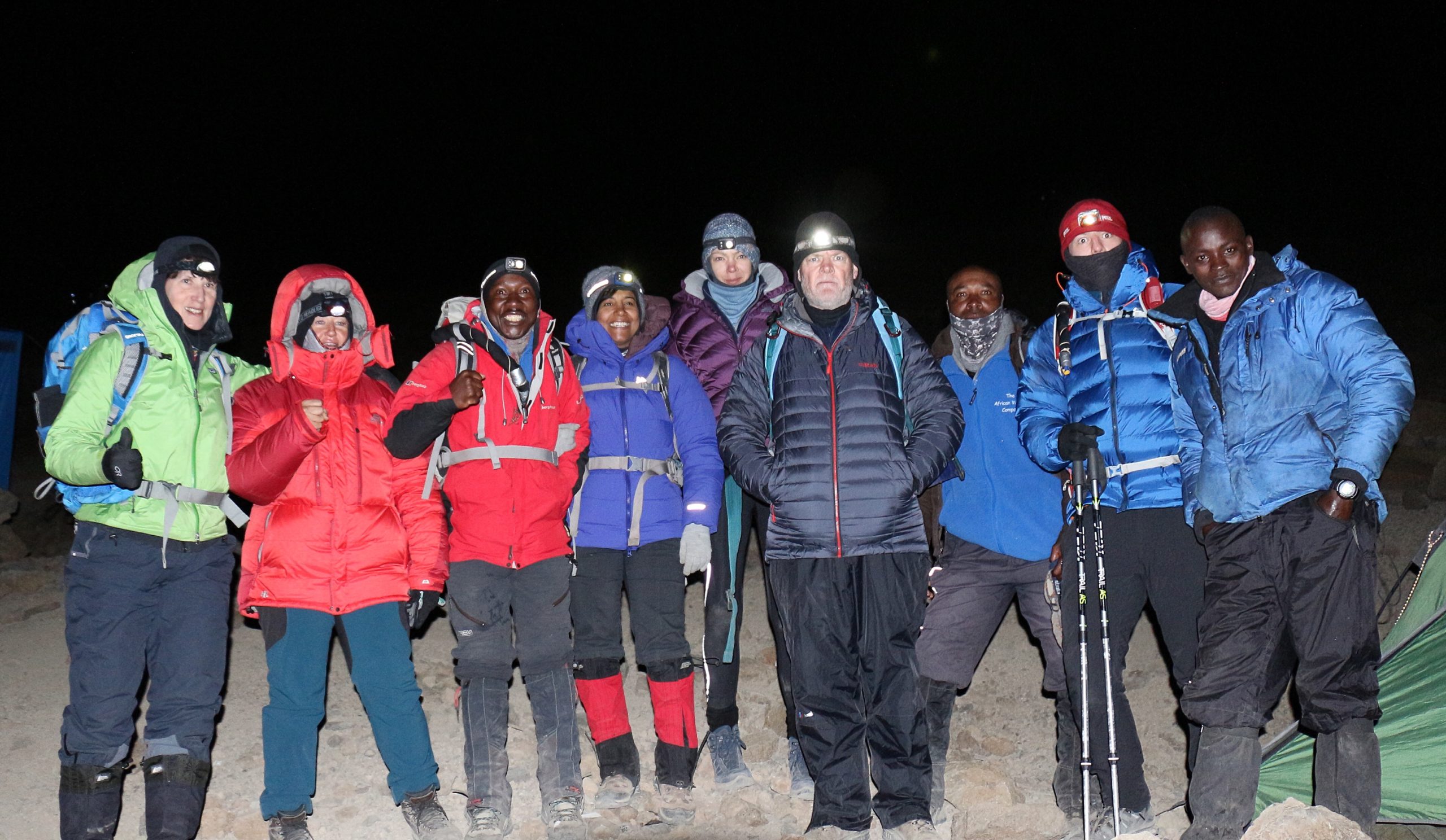
By midnight we are ready to go. As well as our three lead guides, Freddie one of the helping porters was coming along. Freddie was carrying the oxygen in case it was needed, no small task. Team picture taken by Joshua and at 2 minutes past midnight on day seven we are off up the mountain. Joshua was leading which I was thankful for as his pace was very much my ‘Pole Pole’ pace. We soon passed the rock steps that we had walked to earlier and after this the path settled into a steep, scree covered, but manageable incline. Looking up and down all I could see was a long line of shining head torches stretching as far as I could see. It was like we were all one long thin shiny snake working our way up Klimanjaro. Talking was minimal and up we went, hour after hour in the cold and dark with the pace and incline hardly changing. Occasionally we would stop, have something to eat and drink and the guys would take a look at us to see if we were OK. As we got higher, the city lights of Moshi, far below us could be seen as could the billion stars of the Universe far above us, twinkling in the freezing clear night air. Once into the rhythm of ascent, the walking almost became an out of body experience. It took on a surreal dream like quality, robotic and repetitive. In the dark, planting the poles and putting one foot in front of the other for hours on end, the narrow beam of the head torch providing your own little world of about four square feet to walk into, only really aware of those in front and behind you. It’s a long night and my mind and body went through a cycle of stages. At times I felt really tired, my legs were heavy, my fingers and toes were freezing and I was feeling pretty miserable. Then after a five minute rest with some sugar and drink everything reset and was ready to go again. This cycle repeated itself every hour or so. All the time of course we were steadily gaining height and the altitude also probably started to have an effect on us. 3am to 4am were probably the worst hours. It was the coldest part of the night and my water bottle was freezing up, it was still dark, we were tired after 3 hours walking but also knew we still had a long way to go. Other groups were passing us but we also passed some. On balance we were probably passed more than did the passing but it’s a marathon and not a sprint and slowly slowly gets the job done on Kilimanjaro. After 4am I knew the worst of the night was over and the summit was now getting closer with each step. It was also about this time that we started passing by dozens of struggling people, possibly even some of those who had passed us earlier ascending too quickly. These individuals were clearly suffering, some were just exhausted, sitting down and feeling the effects of the altitude, some were crying, some vomiting. A few were literally being carried up the mountain with two porters under each arm. This was clearly dangerous and I asked Joshua about it. He said certainly Exodus/AWC would not do this but maybe they were private guides/porters who would have a financial incentive to get their client to the top. The downside obviously being that the client might die. A quick google search will tell you that the success rate on Kili is anywhere from 65%-95% depending on the route and time taken. For what its worth based on my own experience: There were clearly a lot of people on the mountain, maybe a couple of hundred. If you say that nearly half of these were guides that leaves a hundred or so ‘clients’. I certainly saw a good couple of dozen people who were really struggling, if only a proportion of these gave up I would say the success rate on my night was about 80%-85%. By 5.30am the long cold night began to ebb away slowly and the dawn of a brand new day started to appear over the horizon.

The stars, our companions since midnight were the first to go as almost imperceptibly night turned to day. At first it was that grey, pre-dawn light, just enough to turn the head torches off and actually see where we were going. The outline of the mountain could now be made out for the first time and we were encouraged when Gasper pointed out our first objective, Stella Point, now visible on the crater rim not far above us. As the Sun neared the horizon, ready for its appearance the sky changed, firstly into a pale milky yellow and then, as it finally rose over the horizon all we could do was stop walking and stand in awe as we became the audience in that glorious free display of one of the wonders of nature that plays out every day on a horizon near you. The sky turned golden before our eyes, lighting up the clouds above and revealing a sea of cloud below us. Mawenzi, perfectly silhouetted in the foreground to the East provided the perfect perspective. It was magnificent. It is true that the sun rises every day but some days are certainly more special than others. We were now within touching distance of Stella Point, an important milestone on the route to the top.

Twenty minutes later we were stood at the signpost having our pictures taken. The long night was over, we had broken the back of the climb and now stood on the crater rim. We were ecstatic and the girls even cried tears of joy. Reaching Stella Point is an achievement in its own right. It marks the start of the crater rim and an end to the steep climbing.
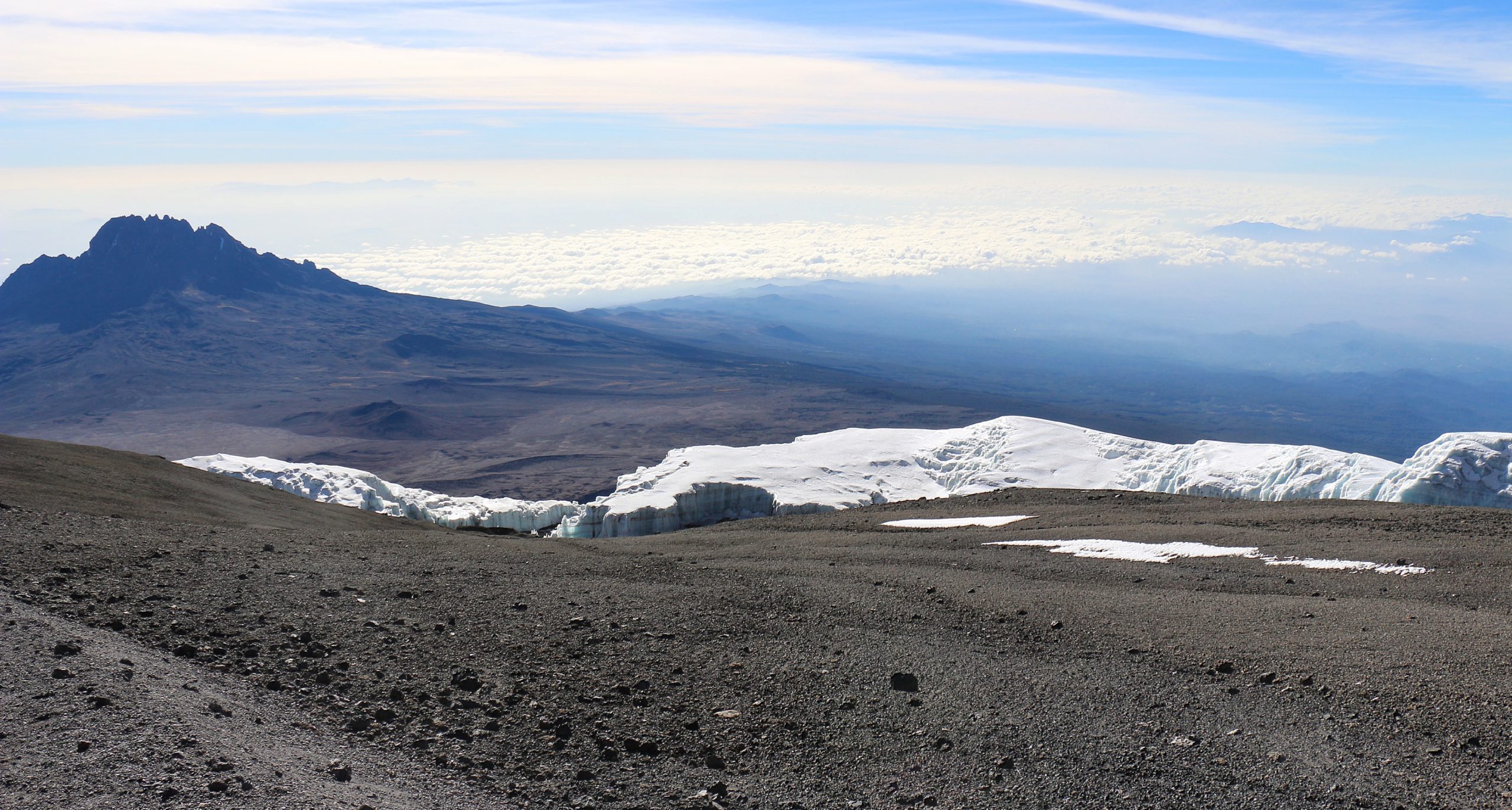
In saying that, we still have to walk around the rim and climb another 450ft if we are to get to the top of the mountain half a mile away. No small effort at nearly nineteen thousand feet. At Stella Point we take a breather and I make sure I get some food and drink down me, a couple of snicker bars, some fruit pastilles and some water. Morale and adrenaline are high so the walk along the crater rim does not seem too painful and by this time the sun is well up and we are warm for the first time. After looking up at the ice fields on Kili for six days it makes a nice change to be looking down on them and we pass the Rebman Glacier, not long after leaving Stella Point.
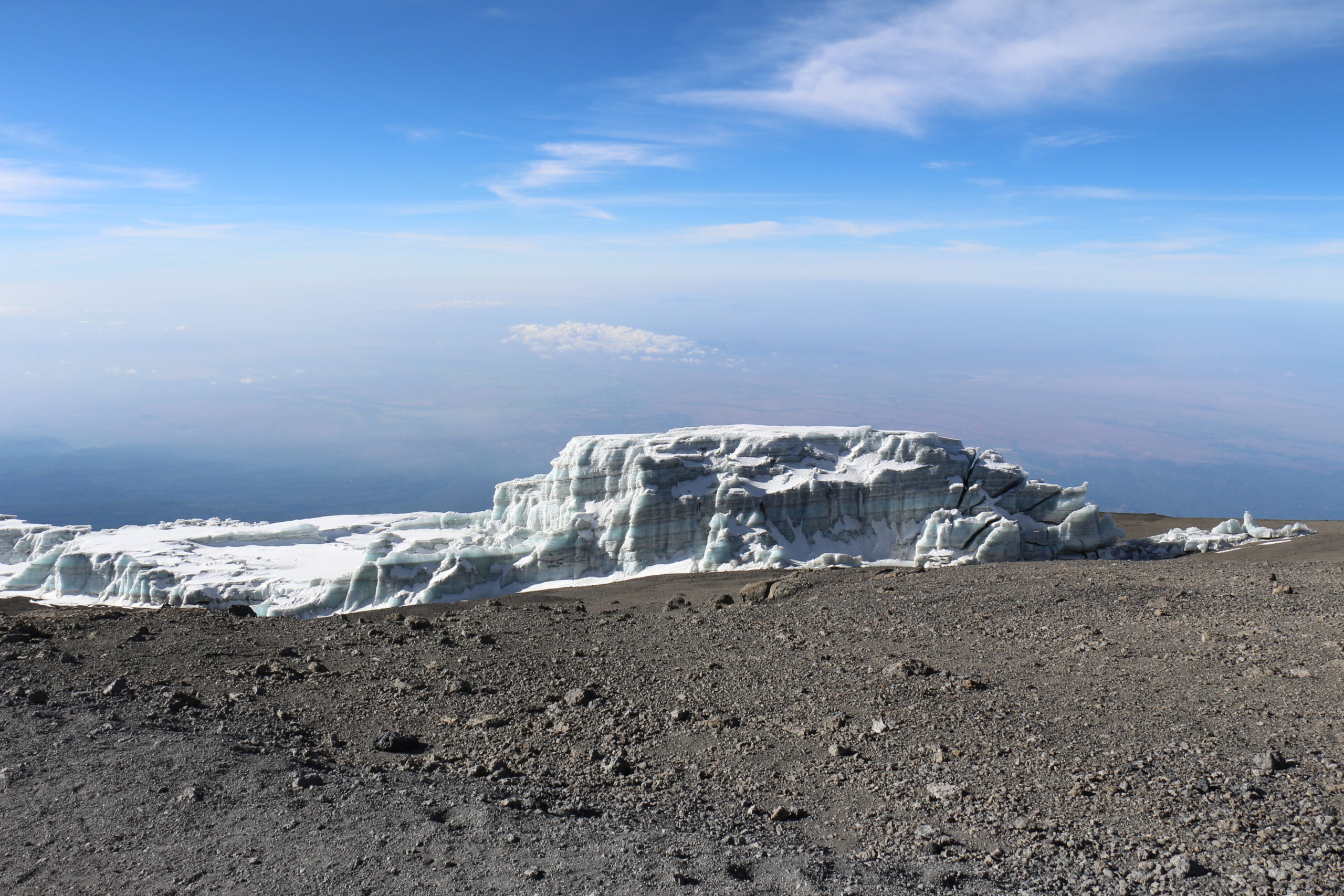
The walk and ascent along the crater rim passes by surprisingly quickly, I think the adrenaline is now in full flow and by 8am, eight hours after leaving Barafu Camp I am standing on ‘the roof of Africa’, Uhuru peak, Mount Kilimanjaro, 19,341ft above sea level. And I’m feeling very satisfied with my nights work.
To Read More About My Journey To The ‘Roof of Africa’ Click Here
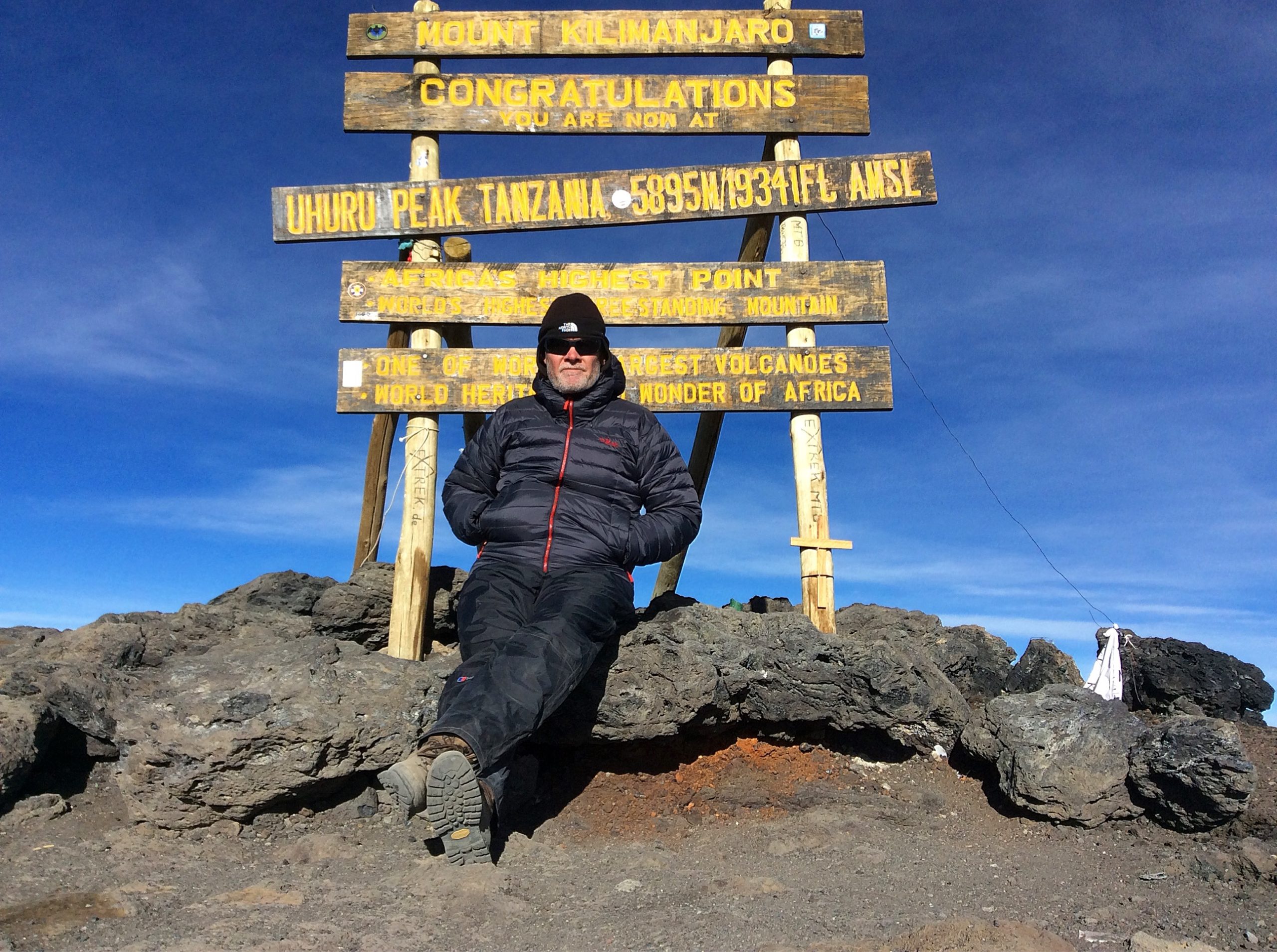
Route Map, Walk Stats and 3D Flyover Video of Route Below.
